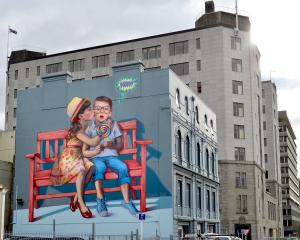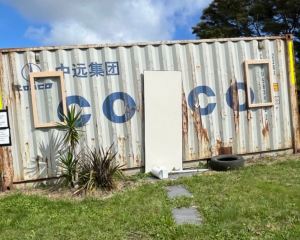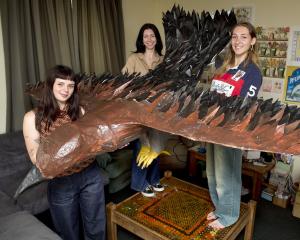In this week's Art Seen, Laura Elliot looks at exhibitions from Richard Adams, Jane Mitchell, and the Hullabaloo Art Space.
 Old Light, New Land, by Richard Adams
Richard Adams: ''Old Light, New Land'' (Gallery Thirty Three, Wanaka)
Old Light, New Land, by Richard Adams
Richard Adams: ''Old Light, New Land'' (Gallery Thirty Three, Wanaka)

There is something innately calming about the work of Richard Adams. His abstract landscapes capture the experience of a beautiful view, the way light shimmers and objects blur and colours linger in your memory, rather than replicating every individual piece of grass or stone.
His geometric compositions, with textured lines of colour laid out in vertical lines and grids, could have a very measured, unemotional effect, but are instead invested with a sense of harmony and fluidity.
Adams' style of abstraction is not an investigation or commentary on the properties of paint and the actual process of painting. It's an abstraction that seems to arise naturally from the physical world that inspired it.
When we're looking at the land and aren't focusing on small individual details, we see blocks of colour, we see different textures hazing together; often, we see strong contrasts between warm and cool tones, and that is reflected in Adams' representations on canvas.
Where the artist particularly excels is in the treatment of light. Even with the most subtle transitions of tone and the incorporation of shadow, the works seem to be lit from within. There is usually a central glow that becomes the pivotal point of the perspective, drawing the eye and pulling the viewer inwards to become immersed in the surrounding image.
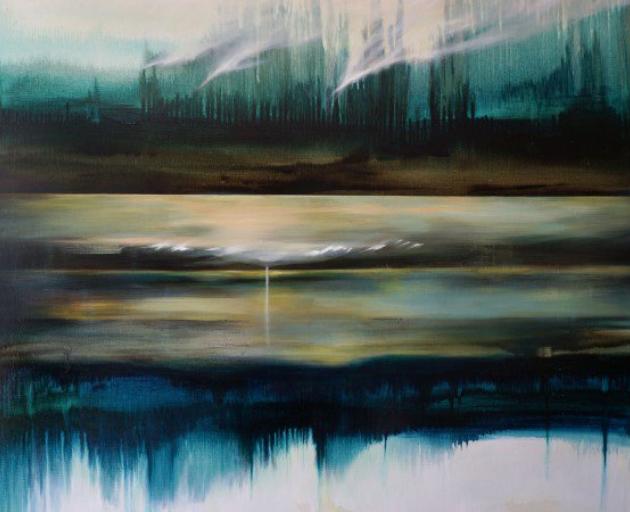 Transgressions, by Jane Mitchell
Jane Mitchell: ''Transgressions'' (Gallery Thirty Three, Wanaka)
Transgressions, by Jane Mitchell
Jane Mitchell: ''Transgressions'' (Gallery Thirty Three, Wanaka)

At first glance, Jane Mitchell's ''Transgressions'' is an exhibition of beautifully executed landscapes with a misty, romantic, peaceful vibe. On closer examination, the first part remains true, but details start to emerge and the collection takes on elements of the melancholy, the wistful and the ominous.
In The Party, the viewer takes the position of looking out through a window on to a cloudy day and foggy plains, with the most subtle reflective sheen on the surface of the canvas, but in the corner of the composition lie two sprawled legs, one missing a shoe.
The Accident is a dramatic collision of impressions, with rain and fire and broken glass emerging from the imagery. One of the most beautiful pieces is The Decision, which is like the curtains have been pulled on an early-morning scene, perhaps the return of calm after a restless night of thinking.
Mitchell grew up in rural New Zealand, and ''Transgressions'' marks the impressions of her return to the land of her childhood. In its blending and blurring of paint, the views through rain-spattered windows, it's a reflection on the memories that survive the mist of time, a recording of the idyllic constancy of the scenery and the extent to which difficult times can influence the way we see and recollect a setting.
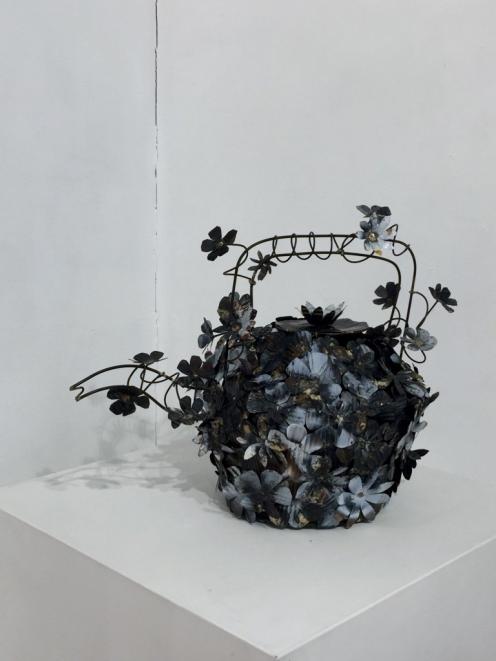 Kettle, by Rachel Hirabayashi
Group Show: ''Still Life: A New Way of Looking at the Ordinary'' (Hullabaloo Art Space, Cromwell)
Kettle, by Rachel Hirabayashi
Group Show: ''Still Life: A New Way of Looking at the Ordinary'' (Hullabaloo Art Space, Cromwell)

The artist collective at Cromwell's Hullabaloo Art Space has come together for a winter still-life exhibition, and each interpretation of the concept is thought-provoking and clever. In their very different styles, many of the artists have approached the theme by taking elements of thriving, joyful life and preserving them in a perpetual state of stillness.
Andi Regan's Six Mountain Daisies are like freshly picked flowers on the wall, and Sue Rutherford's ceramic vessel Mountain Life captures the antics of figures snowboarding and skiing the craggy slopes of the bowl.
Rachel Hirabayashi's Kettle is overrun with metallic flowers, as if an object has been abandoned and nature has taken over, the fragility of the subject matter contrasting with the hardy medium.
Traditionally, still-life compositions often include memento mori and vanitas symbolism, which became popular in the 17th century, centred in the belief that life on Earth was a preparation for life after death.
Common symbols included skulls and hourglasses, to remind the viewer of their mortality, and items such as books and musical instruments to emphasise the ultimate unimportance of worldly goods.
Several of the pieces in the show reflect those ideas, such as Lynne Wilson's Memorial Casket, on which bird and berry imagery, abundant with life, is positioned against the cool white ceramic, which is feathered with lines, as if age is creeping in.
-By Laura Elliot









